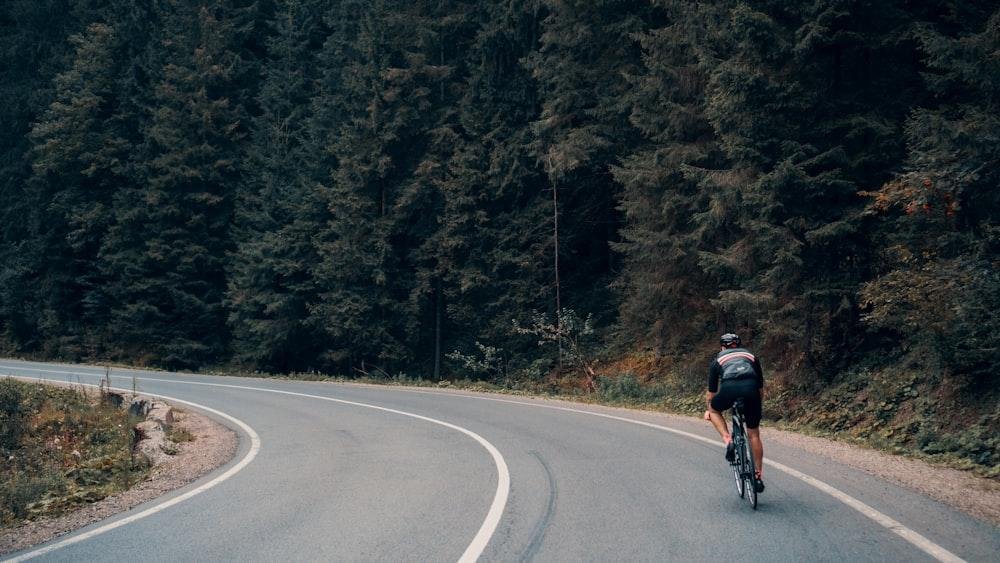If you’re new to cycling, embarking on a long-distance route might sound daunting and definitely something you’d want to try. However, it is easier to achieve than it seems if you are well-prepared. Having a smooth experience when going long-distance largely depends on your planning and strategy ahead of the journey. It’s not just novice cyclists that should be prepared, experts must be ready for the demands of long-distance as well. So, with that in mind, here are some things you should be aware of.
Trust your bike
It’s important to feel comfortable on your bike when you go long distances. Make sure that your bicycle is in perfect shape and doesn’t need any repairs. If you plan on using a road ebike, plan your route in such a way that you have access to charging infrastructure. Charge to full capacity to ensure perfect performance and increased longevity. Your bike should have a capacity of at least 33 watt-hours. If you need a new bike, remember that you don’t have to buy something new, there are plenty of pre-owned bicycles out there in perfect condition. To stay on the safe side, buy from trustworthy sellers who work with certified mechanics to ensure you’re purchasing a high-quality product.
Comfort first
Being comfortable during a long-distance cycling journey can be challenging, so it’s critical to create a self-care routine before heading out your door. Try to change hand positions periodically and keep your thumbs around the bar. There’s also the option of keeping them around the brake lever to ensure better security. The position you maintain while cycling can also take a toll on your shoulders and neck, leaving you with stiffness and tightness in the muscles and joints. Shrugging for anywhere from five to ten seconds can alleviate the discomfort and give your muscles a chance to relax. Stand up and drop one pedal so your leg can get straight. Allow your heel to sag to eliminate the pressure from the joint, and switch to the other leg after twenty seconds.
Stretching
Doing some simple stretches can help tremendously as well, but make sure that you either stop for a few moments to do them or are on a clear part of the road. Otherwise, you might increase the risk of accidents for both yourself and others. Reaching your hand up and over to reach between your shoulder blades for just a few seconds can bring instantaneous relief from achy shoulders. The cat-cow will give your spine a gentle stretch. Inhale and arch the spine, with a focus on pulling the tailbone back and getting the shoulder blades down. You can also twist, stretching an arm out and to the back toward the rear. To stretch your hips, stand parallel to your bike, holding it with both hands. Fold forward until you feel the back of your legs stretching thoroughly. Simple neck and side stretches will feel amazing after spending a long time in the saddle.
Speed
Your pedaling speed is also critical during a long-distance right. You must save your energy since going very fast right from the start might cause you to feel exhausted later on. Even if you don’t generally struggle with stamina and lack of energy, you must still avoid overestimating your strength. Part of that is pedaling in a gear that is efficient for you so that you don’t get sore muscles and have to take time off in order to recover. Ideally, you should choose a higher cadence and an easier gear, as the ones that are lower can be more difficult to turn. Look for the ideal bike for you on https://upway.co/ so that you can cycle in perfect comfort.
Nutrition
Eating well and staying hydrated is crucial so that you can feel well throughout the journey. It’s common to forget about both, but you’ll definitely feel the effects, so make sure to create a comprehensive routine that allocates special time to restore your energy. Eating is the only way to sustain your effort. Depending on your exertion levels, the type of roads you navigate and the heat, you’ll need to adjust your food and liquid intake. Ideally, you should aim for at least one or two bites of food every quarter of an hour. In the span of two hours, your water bottle should be ready for a refill, and you can also stop for a more substantial snack at that point.
Carbs are crucial, as they fuel your high-intensity needs, but you must also get proteins and an adequate amount of healthy fats to support energy levels. Energy gels are one of the most popular snacks among cyclists since they’re easy to digest and carry along. Bananas, dried fruit, sandwiches, nut butter, avocadoes, eggs, turkey, energy bars, walnuts and almonds are all popular among those familiar with endurance cycling. As for water, you can infuse yours with electrolytes for a boost in rehydration. The minerals typically included in the electrolytes are magnesium and sodium. They preserve your body’s natural balance, and you can avoid all the unpleasant risks that come with overhydration.
Clothing
The clothes you wear should keep you comfortable regardless of the weather. Getting cold or becoming overheated will cause you to become distracted and can increase your accident risk. To be on the safe side, get functional clothing specifically designed for cycling, including bike shorts, leggings or tights, socks, gilets, jackets, and shoes. If you’re biking in a colder area, thermal jackets, gloves, and caps will keep you warm without constricting or impeding your movements in any way.
Tools
You don’t have to strap a giant toolbox to your box, but it’s important to be prepared for the unexpected when going on a long-distance trip. Bringing a multitool along can save you a lot of trouble, and make sure you have some cash ready just in case. Your smartphone should be charged, and you must not leave your ID behind. Most cycling rides go smoothly, but just in case you encounter some trouble, this should be enough to remedy the situation.
Long-distance cycling takes stamina and dedication, but if you’re well-prepared before leaving home, you can be confident that you’ll have a fantastic trip.
















